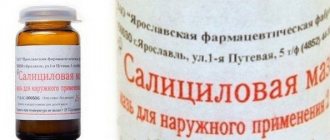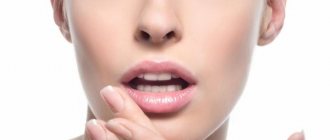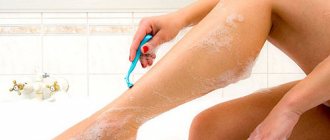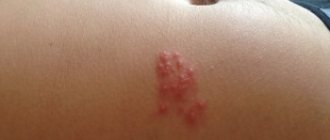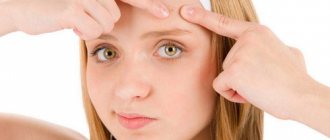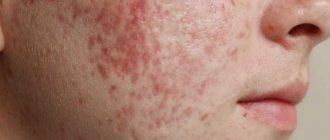Pimples on the neck occur equally often in both men and women of all ages. A rash in this area is a sign of the disease, accompanied by a number of associated symptoms. Cervical acne brings a lot of discomfort - it causes pain, itching and redness of the skin, which requires immediate treatment. It is better to carry out therapy after consulting a dermatologist without waiting for an abscess to appear on the neck.
- Drug treatment of acne
- Use of traditional medicine
- Causes of acne
- Minor rash
- Purulent
- Subcutaneous
- Video about rashes on the neck
- Reviews
Drug treatment of acne
You can get rid of rashes of various forms on the neck by using medications that affect the causes of acne. Each of the medicinal or cosmetic products has unidirectional objectives:
- suppression of the activity of bacteria and pathogenic organisms that cause inflammation;
- cleansing and narrowing pores;
- regulation of sebaceous gland secretion;
- drying out pimples and blackheads.
To accomplish the assigned tasks, the following tools are used:
| Photo of the drug | Action |
| Antibiotic drugs . To treat large pimples with purulent contents (including boils), drugs based on antibiotics, usually of the tetracycline group, are used. The active component has the ability to dissolve in fats, which increases the effectiveness of its work - blocking the ability of bacteria to reproduce. As a result, the cause of inflammation and suppuration is destroyed. Tetracycline, Erythromycin, or Clindamycin are prescribed by your doctor to take by mouth. | |
| Retinoids . A group of drugs that are applied topically and accelerate the processes of skin renewal and exfoliation of dead layers. Thanks to the use of ointments Klenzit, Effezel or Adapalene, it is possible not only to get rid of a pimple, but also to prevent its development into more complex forms. | |
| Salicylic alcohol . Helps fight individual areas of inflammation, drying and disinfecting purulent, allergic, watery colds and other types of pimples. | |
| Hormonal agents . Used in complex cases of acne, when the rash is large-scale. Popular drugs: Triderm ointment and cream with a combined composition (synthetic hormone betamethasone with anti-inflammatory and antipruritic effects, clotrimazole to fight fungi, and the antibiotic gentamicin to destroy bacterial microflora). | |
| Pharmacy talkers . They are prepared on the basis of various drugs - boric and salicylic acid, chloramphenicol, alcohol, sulfur, streptocide, etc. by prescription from a doctor. Ready-made mixtures are also sold: Propeller, Tsindol, Zinerit, Vidal's milk. |
What do pimples on the neck and chin mean?
The reasons why acne appears on the chin and neck of women are always varied and strictly individual. There are several main factors:
- An imbalance of nutrients supplied with food leads to metabolic disorders. Eating heavy, sweet, and salty foods has a particularly strong effect. The digestive system begins to function incorrectly, nutrients enter the cells unevenly. Abuse of harmful products is one of the main reasons for the appearance of acne on the chin and neck.
- Neglect of personal hygiene rules. Men sweat a lot during physical work. It is not always possible to take a shower, so the excreted sweat remains on the skin, clogs the pores, and sticks dirt to the skin. In addition, the neck area, where friction of the shirt collar very often occurs, remains unattended during water procedures.
- Allergies to cosmetics, products, fabrics (especially synthetic ones).
- Wear and tear of the body as a result of stress, lack of sleep, overwork, exhaustion.
- Diseases of the gastrointestinal tract and kidneys, endocrine system, hormonal imbalance.
- Decreased immunity as a result of drinking alcohol and smoking causes the development of bacteria. This environment is favorable for the appearance of acne.
- Women are characterized by restructuring of the body in the period before the start of the menstrual cycle, as well as directly on critical days. Hormonal levels change, as evidenced by pimples on the neck and chin, swelling appears, and mood changes dramatically.
- There are more dangerous problems that are signaled by acne in certain areas (neck, chin) - ovarian dysfunction, chronic diseases, and the development of infection.
Attention! The occurrence of a rash can be psychosomatic in nature, as a reaction to increased anxiety or a general depressed state of mind.
Use of traditional medicine
You can fight the appearance of acne on the neck and collar area in adults using folk recipes:
| Means | Recipe |
| Cucumber mask . If the pimples are small and look like irritation, then you can use finely grated cucumber - apply the mixture to the neck and chin area for a quarter of an hour, then rinse with water. | |
| Peppermint lotion . 1 tbsp. l. dried mint, pour 250 ml of boiling water and leave to infuse for half an hour. Pour 1 tbsp into the strained and cooled mixture. l. lemon juice and boric alcohol. To remove acne on the neck, you need to wipe the redness area with ready-made lotion in the morning and evening. | |
| Garlic lotion . Helps eliminate painful rashes on the neck and cheekbones. To prepare the product, several large cloves are crushed, placed in a glass bottle and filled with a glass of water. After leaving for 24 hours in a closed container, treat the area with rashes with lotion 2-3 times a day. | |
| Infusion of walnut leaves or birch buds . 50 grams of dried raw materials (or nut leaves, or buds) are poured with a glass of boiling water and left overnight in a thermos. The strained medicine is used to wipe white and red pimples on the neck, including in the tonsil area. |
Diet therapy
If a diet method is chosen for treatment, you must adhere to some rules:
- drink at least 2 liters of clean water without gases per day;
- Instead of laxatives, it is best to use prunes, watermelon or plums to cleanse the intestines.
- For preparing dietary dishes, it is recommended to use plenty of vegetable oil.
The main question when dieting for acne on the neck in women is what foods to eat. Of all possible diets, you should stick to foods rich in digestive fiber.
These are products such as:
- buckwheat and rice;
- flour, pasta products;
- bran;
- cabbage of all kinds;
- beans and green peas;
- spinach;
- flax-seed.
Causes of acne
The localization of acne under the jaw, on the neck and behind the ears is quite unusual, and can indicate both the influence of external factors on the skin and deviations in the functioning of internal organs.
Minor rash
A small rash forms due to several reasons:
- improper hygiene. Often the problem also occurs on the head under the hair due to poor rinsing of shampoo residues;
- diseases of the digestive tract;
- pregnancy - often women, due to hormonal changes, develop areas of rash with small pimples on the neck and chest;
- helminth infection;
- infectious diseases - typhoid, measles, rubella, herpes, etc. In such situations, the localization of spots and rashes will be more widespread, and additional symptoms will appear;
- skin trauma due to wearing synthetic scarves, clothes with a high neck, etc.;
- irritation due to the active production of sweat (it is because of the heat behind the hair and in the skin folds that prickly heat forms).
Purulent
Bacteria multiply in clogged pores, which leads to the formation of pus. Conditions for the active activity of microorganisms are created by the following factors:
- lack of hygiene;
- disorders of the thyroid gland and hormonal imbalances;
- infectious diseases;
- allergies, including reactions to the sun;
- diabetes;
- poor nutrition;
- suppuration and inflammation of the lymph nodes in the neck (pimples on the lymph nodes are a signal of an infectious process);
- severe stress.
Subcutaneous
Inflamed, painful and dense formations under the skin with a diameter of about a centimeter or more are subcutaneous, internal acne. The following factors can provoke their appearance:
- hormonal changes in the body, including pregnancy, pre-menstruation and puberty;
- unbalanced diet with consumption of large amounts of fatty and sweet foods;
- ignoring the rules of personal hygiene;
- diabetes;
- thyroid disease.
Such lumps or wen can develop into cysts. Self-squeezing is strictly prohibited - you must go to the hospital.
Subcutaneous acne on the face
Subcutaneous acne can range from small spots to large inflamed formations that look like large, hard swellings.
Unlike regular pimples, they are located deeper under the skin and cannot come out.
They take a very long time to ripen - up to several weeks. And if you squeeze them out, the red acne marks will go away for several months!
Not only the appearance suffers from subcutaneous acne - bacteria multiply inside under the skin, where the hair follicle is located. And this can already be dangerous!
How to get rid of subcutaneous acne?
Let's consider two options:
- when a single subcutaneous pimple needs to be removed quickly,
- when there is a lot of acne and you need to cure this disease - it takes a long time, but it is reliable.
Quick Methods
A quick way to get rid of a subcutaneous pimple is to cut off a piece of aloe, cut it lengthwise and apply the inside to the pimple, you can secure it with a band-aid overnight.
By morning, the pimple will shrink and the redness will disappear. But the pus will not come out, and after a few days or weeks it may become inflamed again.
Another option is to smear ichthyol ointment on a cotton pad and attach it with a plaster overnight. The ichthyolka pulls the pus out - that is, the pimple will burst. Therefore, it is better to do this procedure on the weekend to allow the wound to heal. This option is preferable to the first one,
Complex long-term treatment
For home treatment, antibacterial ointments and creams are effective, since subcutaneous acne most often occurs after bacteria get under the skin:
- Zenerite,
- Baziron,
- Erythromycin ointment.
The most widely used and effective drug in this group is Zinerit. It is a universal medicine for the treatment of subcutaneous acne on the face, chest and décolleté and on the back. Having two active components - erythromycin and zinc, Zinerit effectively eliminates bacteria that cause inflammation. In addition, it normalizes sweating.
Also, to treat acne, modern types of cosmetic procedures of hardware cosmetology are used - peeling (gentle removal of dead skin particles), laser cleansing and ozone therapy.
If scars have formed at the site of acne, you should:
- chemical peeling,
- cryotherapy,
- paraffin applications,
- administration of triamcinolone to the sites of inflammation.
Naturally, you should not prescribe medications and procedures for yourself. This should be done by a doctor. If you, of course, want to get rid of scars without consequences.
Causes of subcutaneous acne on the face
Subcutaneous acne occurs when the sebaceous glands of the skin become inflamed. They develop suppuration, causing redness and severe pain. The causes of subcutaneous acne can be hormonal and non-hormonal factors:
Most common reasons
The most common cause of subcutaneous acne is a cold. A little hypothermia is enough, especially if the immune system is reduced. If you dress lightly, don't be surprised by constant acne.
The second reason is lack of hygiene. We unconsciously touch our face several hundred times a day: either propping up our heads or removing hair from our faces. Don't touch your face with dirty hands! And use your own personal towel for your face, there should be another towel for your hands.
In addition, the causes of subcutaneous acne can be:
- Excessive sweating can also be attributed to hygiene problems.
- Inflammatory diseases of the gastrointestinal tract - acute and chronic gastritis, intestinal dysbiosis, liver and gallbladder diseases and kidney stones.
- Squeezing out acne (!) - this is how you introduce infection into the wound.
- Improper skin care.
- Decreased immunity.
Here's what makes the skin condition even worse:
- ultraviolet radiation - for example, frequent visits to the solarium,
- diet - lack of vitamins affects
- stress,
- smoking.
So before you head to the pharmacy, pay attention to your lifestyle and what you eat.
Hormonal reasons
If subcutaneous acne constantly torments you, the cause may be much more serious, and you should check with a doctor. In many cases, the cause of subcutaneous acne is disruption of the endocrine system:
- inflammatory or cystic processes in the ovaries,
- disturbances in the normal functioning of the thyroid gland,
- malfunction of the pituitary gland.
If you are also taking hormonal medications or experiencing stress or depression, “hormonal” acne develops with double force.

